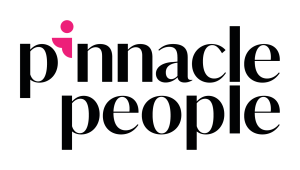Sick leave; when should you take it and when shouldn’t you take it?
In many parts of Asia, the culture is such that workers who are sick wear a face-mask as a courtesy to colleagues and other commuters. Though it may look strange to us, it’s a practical and considerate habit, which some even dress up with patterned or coloured masks. However, as we lack such a culture in Australia, where should you draw the line between encouraging staff to come in vs stay home?
While paid sick leave, at 10 days per annum pro rata, is a compulsory component of full and part time contracts, the use – or controversially, enforcement – of it varies widely from one workplace to another. In many workplaces, employees feel that they should come to work unless they are physically unable to work; however this sort of behaviour leads to both presenteeism as well as an increase in the number of colleagues or customers who may also fall ill.
At this time of year, it’s pertinent to think about the Influenza virus. Many workplaces do provide annual “Flu Vaccine” programs, however not all staff take these up, and even when they do, the Flu is well known for mutating rapidly so the vaccine is not always effective. Your staff would probably be aware that the Flu virus is highly contagious – and being viral rather than bacterial, there isn’t much that can be done other than to see it out. But most people are unaware of the details.
Transmission may begin up to 24 hours before symptoms are present (there isn’t much that can be done about that!) and you may continue to infect others for 5-7 days after the first symptom appears. So just because you feel better in 3 days, doesn’t mean that you won’t make a colleague sick. Not to mention that ill health in customer facing hospitality jobs – and especially espeically food handling roles – can cause major problems.
While everyone would be familiar with the symptoms of the flu – fever, congestion, runny nose – few would be aware that it also causes inflammation of the brain which causes cognitive impairment, including: inability to sort new memories, loss of coordination, slower reaction times, and a decreased ability to synthesize verbal information. These factors can all contribute to poor quality of work as well as a higher potential for error and workplace accidents whether working in the hospitality industry or in an office.
On the flip side, there are also those staff members who view Sick Leave as a right, and will always endeavour to use it in full, even if they have not been sick.
How can you handle it?
Policy can be used to manage risks. If you do get team members who well enough to return to work while they are still potentially infectious, consider a mask policy, or for non-customer facing roles, have work-from-home systems in place.
Culture also plays a big part. If workers feel they will be criticised or even penalised by their managers for calling in sick, they may continue to work until they are physically incapable of doing so – which is well beyond the point where they may pose a risk to the health of others. A strong positive workplace culture is also less likely to foster team members who are inclined to abuse the system, and decrease the likelihood of workers taking sick leave due to low morale or stress.
Staffing If you utilise a casual work force, it’s always good to have a few extra people on hand, but juggling this isn’t always easy. Having a reliable source of back up staff is essential to deal with sudden epidemics of illness, particularly for staff members in food service.
